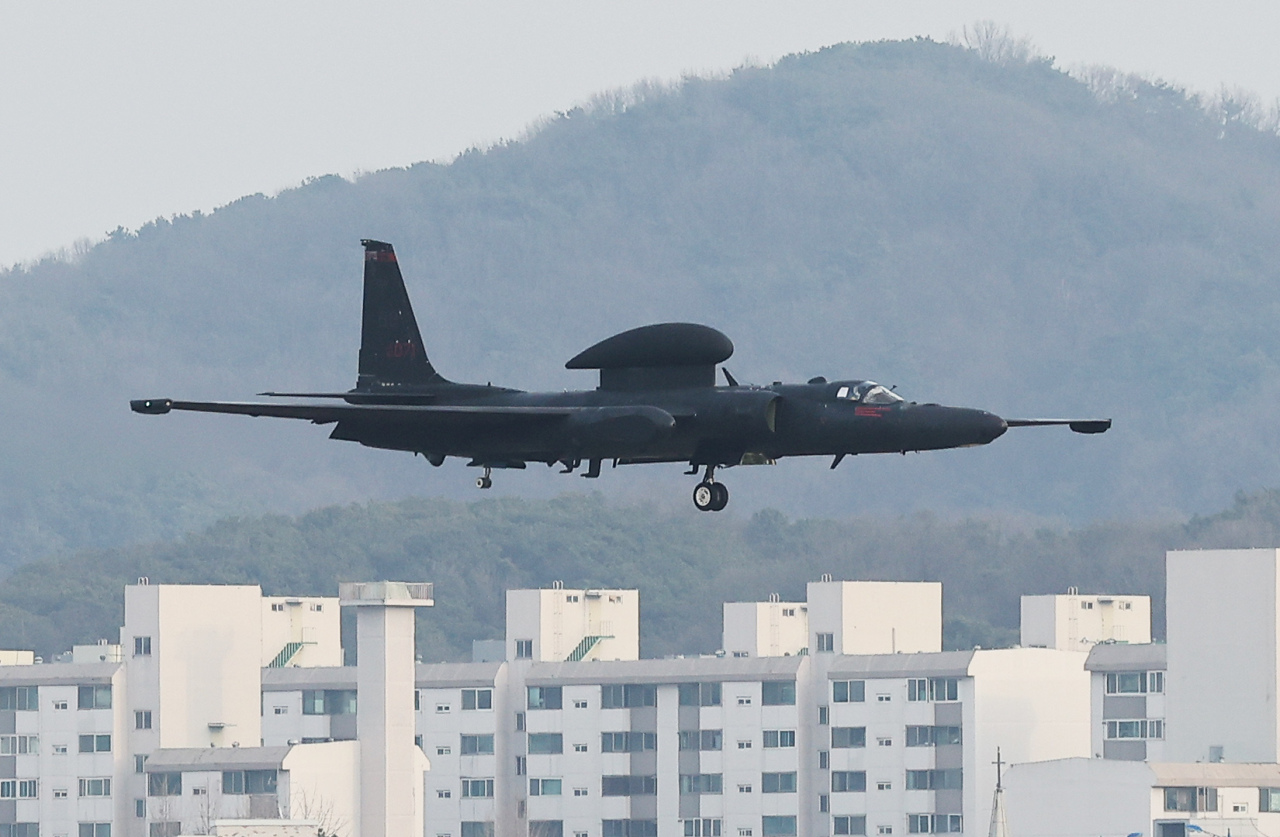 |
A U-2S high-altitude reconnaissance and surveillance aircraft lands at a US airbase in Pyeongtaek, Gyeonggi Province on Thursday. The US military has increased surveillance activities in response to North Korea’s recent series of projectile launches. (Yonhap) |
North Korea could be preparing to launch an intercontinental ballistic missile soon, with satellite imagery showed a new concrete structure laid at Sunan airfield near Pyongyang, according to a media report.
Citing photos taken Saturday by Planet Labs, Voice of America reported Tuesday that the North has built two concrete slabs between the airfield’s runways and taxiways designed to support a transporter erector launcher, or TEL, used for launching missiles.
The report said the structures are both 50 meters wide, with the bigger one measuring 220 meters long and the other one 100 meters long. The North appears to have built the structure between last Tuesday and Wednesday.
In previous missile tests, the North placed the TEL on top of a concrete foundation, in order to prevent destruction of the launchers as well as increase the accuracy of the trajectory.
When the North fired the Hwasong-14 ICBM in July 2017, it was launched from a TEL on top of a concrete slab. A similar structure was used for Hwasong-15 ICBM launch in November that year as well.
The satellite images come as South Korean authorities warned that the regime could carry out an ICBM system test as soon as this week.
In a rare joint announcement, Seoul and Washington said last week that the North’s two recent missile launches on Feb. 27 and March 5 -- which Pyongyang claimed were for a reconnaissance satellite -- were to test a new ICBM system. While it thought the recent launches only tested parts of a missile, the Pentagon said that the North may conduct an ICBM test at “full range” in the future.
The new missile system, known as the Hwasong-17, was first unveiled during a military parade in October 2020, with some analysts calling it a “monster” for its size.
The prospect of the North following through on its threat to break a self-imposed moratorium on long-range ballistic missiles and nuclear weapons is concerning as it could dramatically raise tension on the peninsula as the presidential transition gets underway in Seoul, while Washington is fixated on Russia’s invasion in Ukraine.
The North has observed the moratorium since it last tested an ICBM in 2017, which was assessed as capable of reaching the US mainland.
An official at Seoul’s Joint Chiefs of Staff said Tuesday that South Korean and US intelligence authorities are keeping close tabs on the situation, and maintaining a robust readiness posture.
The Unification Ministry, in charge of inter-Korean affairs, reiterated its position, calling for the North to immediately cease actions that “run counter to peace and stability on the Korean Peninsula and are of no help to the development of inter-Korean relations” and return to dialogue.



![[Herald Interview] 'Trump will use tariffs as first line of defense for American manufacturing'](http://res.heraldm.com/phpwas/restmb_idxmake.php?idx=644&simg=/content/image/2024/11/26/20241126050017_0.jpg)

![[Health and care] Getting cancer young: Why cancer isn’t just an older person’s battle](http://res.heraldm.com/phpwas/restmb_idxmake.php?idx=644&simg=/content/image/2024/11/26/20241126050043_0.jpg)

